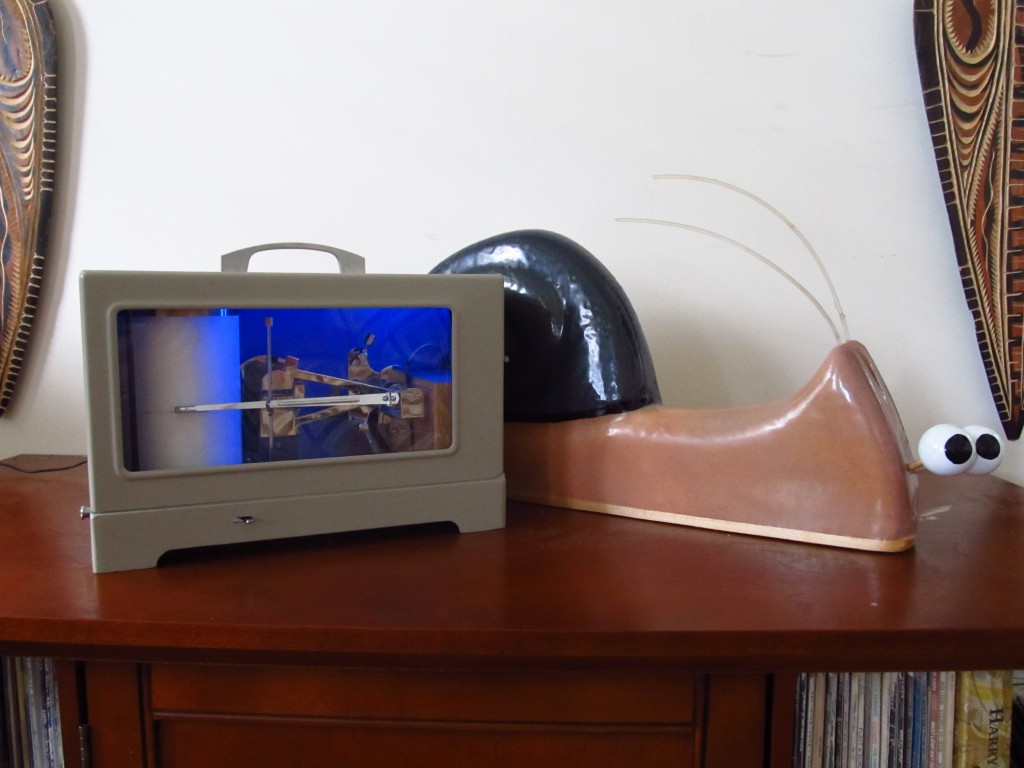
Two weeks ago, a machine was left on the “free” table at my lab that surprised me–a beautiful stainless steel mechanical water level gauge, on of those old ones with a flywheel in the back that drives the mechanism. Seeing this made me realize that there must be thousands of old scientific devices rusting away in laboratories across the country, obsolete but too well-build to just be thrown out. Then, I thought, there must be some way to take these old tools, some of them elegant, hand crafted works of industrial art, and give them a second life. For Science Online Oceans, I proposed a section on “Hacking the Ocean” developing low-cost, DIY instrumentation to make oceanography accessible to a broader community, but could that work the other way? Can we harness that same maker mentality to take abandoned scientific instrumentation and turn them into tools for education and outreach, or create art through instrumentation?
So I built the Sea Leveler.
http://www.youtube.com/watch?v=UI6p5QxTDEU
I don’t imagine that the Sea Leveler is going to profoundly alter the way we talk about sea level rise and climate change. At its heart it is a small conversation piece, a curiosity that can pique the interests of those who would not normally engage with the sea level rise literature.
What I do envision are adventurous scientists finding new and novel used for their obsolete equipment, harnessing the creative power of the DIY and open source movements to create tools to educate, inform, and inspire; Science-as-Art-as-Instrumentation at its finest.
If you do want to engage with the Sea Level Rise literature, here are some places to begin:
- Ocean Levels Are Getting Higher—Can We Do Anything About It?
- The IPCC sea level numbers
- Sea level rise could bust IPCC estimate
- (Mis)Understanding Sea-Level Rise (SLR) and Climate Impacts
If you want to build your own Sea Leveler, all of the code is available from my github account. Come back later this week for a detailed build guide.

Andrew, you are taking a page from your dad’s book. Start your own museum of antique and important instruments.
Mom
This is so cool! What a great use for old equipment. Thanks for sharing! 🙂